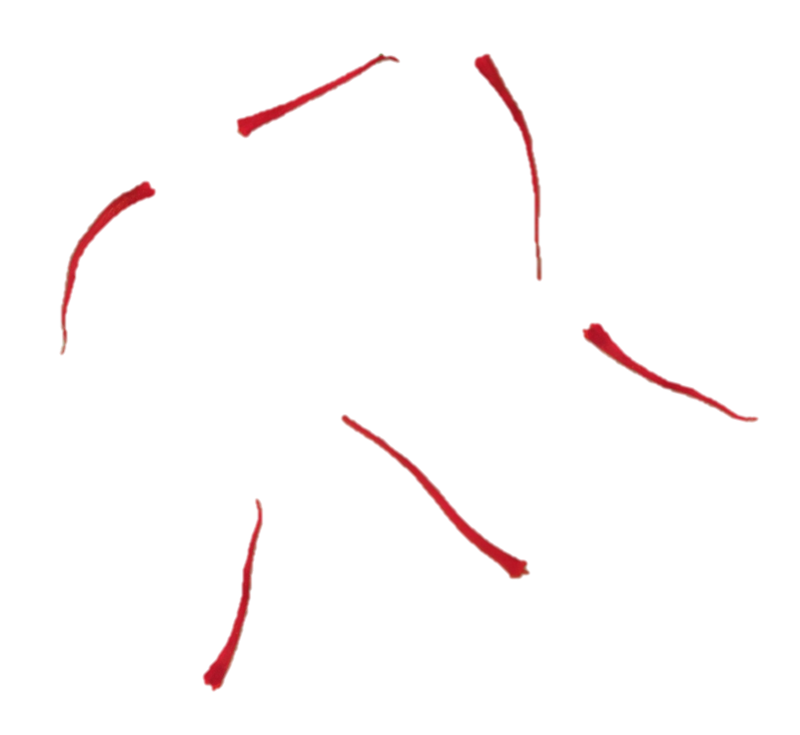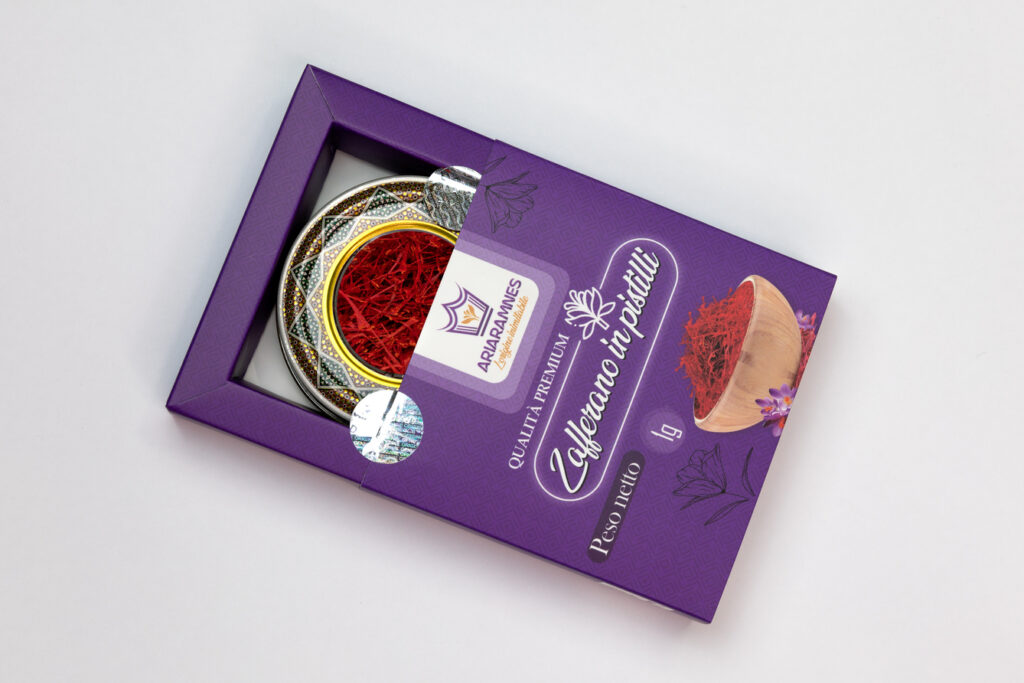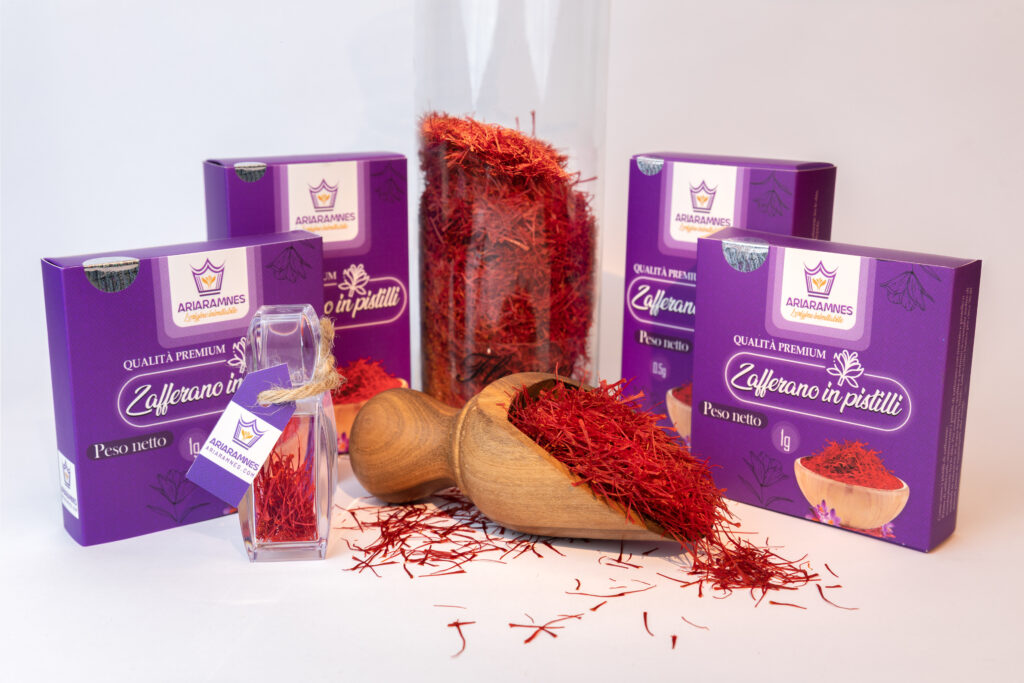How to recognize fake saffron
How to recognize fake saffron
Saffron is one of the most expensive spices in the world, which is often referred to as “red gold”. Due to its high value, it is not surprising that there are many fake saffron products in the market. In this article, we will review different methods of testing the authenticity of saffron. Here, we will discuss some of the most common methods of testing saffron and give you various tips on how to identify fake ones. Just as a hint, it is always recommended that when buying saffron online, its quality cannot be tested, so it is necessary to buy from a reliable store.
Evaluating the smell of original saffron
Saffron actually has a sweet smell, but its taste is not sweet at all. When you rub it between your wet fingers, it turns orange/red/yellow. Experts in this field suggest that if you rub real saffron between your fingers, your skin will turn yellow / orange. While saffron smells sweet, its taste is slightly bitter, not sweet.
The color and appearance of the original saffron
Saffron threads are trumpet-shaped. If a thread does not have a bulge at one end, it can be assumed that it is fake.
The taste of original and fake saffron
You can taste saffron to determine if it is real or fake. Real saffron should have a slightly bitter taste with a floral and honey aroma, plus, fake saffron often has a sweet taste because the fakes sprinkle sugar water on it to make it heavier and consequently sell it at a higher price. However, it is important to mention that tasting saffron is not the most reliable way to determine its authenticity. Among other methods, we can refer to checking the appearance of threads and the price of saffron. The taste of saffron is important for many people because this substance can be used in drinks such as saffron tea.
Saffron test in water
There are different methods to test the authenticity of saffron in water in which the most valid one is to put some strands of saffron in hot water. High-quality saffron should have a dark red color and the water will turn orange-red within a few minutes. Another method is to put a few threads of saffron on a transparent glass filled with cold water. Pure saffron slowly releases a golden color, and the last method is to insert the threads in a small container of lukewarm water and at least 15 minutes If the threads do not have a bulge at one end, it is fake.
Saffron test with baking soda
One of the ways to test saffron with baking soda is to mix it and baking soda in a small cup filled with water. Wait until the saffron turns color, which is less than 10 minutes. If it is golden yellow, you understand it is pure while If it produces a reddish yellow color, it is better to throw away those fake threads.
The difference in the price of original and fake saffron
An obvious way to distinguish real saffron from fake is that it is expensive to produce real saffron. It is important to know that the price of real saffron cannot be $8 and based on the quality and type of saffron this price can go higher.
Rubbing saffron threads between the fingers
To test the authenticity of saffron by rubbing it between your fingers and checking its texture, you should rub a small amount of saffron between your fingers. If the saffron is real, it has a slightly oily texture and is not powdery or sandy.
Using gasoline and diesel to identify the original saffron
The usage of gasoline can be a technique also to realize the reality of saffron. Saffron does not dissolve in petrol or gasoline. Therefore, if you add some saffron to gasoline and your gasoline is colored, be sure your saffron is not pure.
The best way to store saffron
It has a unique taste and aroma that can enhance any food, However, saffron can also be completely perishable. If it is not stored properly, it will lose its flavor and strength.
Here are some tips on how to properly store saffron :
-
Store saffron in a closed container.
-
Saffron is very sensitive to moisture and light. Closed containers help to keep it fresh and prevent it from losing its flavor.
-
Store saffron in a cool and dark place.
-
Direct sunlight and heat can damage saffron and cause it to lose its taste.
-
If you do not use saffron regularly, freeze it.
-
Saffron for up to 4 years can be frozen. If you do not use saffron regularly, freezing it helps to increase its shelf life.
-
Use a small amount of saffron at a time.
-
Saffron is a very strong spice. A small amount of saffron is enough for all your uses. When using saffron, start with a small amount and add more and taste.
By following these tips, you can store saffron properly and enjoy its delicious taste for many years.
The benefits of proper storage of saffron
Proper storage of saffron has many benefits. Here are some :
-
Saffron has a longer shelf life
-
Saffron retains its flavor and strength
-
Using saffron will be more enjoyable
-
Saffron saves you money
The most common methods of fraud in saffron
Saffron is a very expensive spice and is often the target of fraud and deception. There are three types of fraud and deception in the sale of saffron :
-
Fake saffron: People who try to deceive the buyer with fake saffron may sell colored saffron plant material that is not saffron. This substance may look like saffron, but it will not have the same taste and aroma.
-
Similar products: People who produce products similar to saffron may intend to victimize the buyer and make their product look like saffron. For example, they may sell saffron-flavored food coloring or saffron extract. These products may not contain as much saffron as real saffron and may not have the same taste and aroma.
-
Wrongly claimed imported saffron: People may sell imported saffron in the name of another country or the name of their own country. This is often done to avoid taxes or to make saffron look more valuable.
There are several things you can do to avoid being deceived when buying saffron :
-
Look for genuine saffron: True saffron threads are long and thin, with a deep red color. If you see saffron powder or extract, it is probably not real.
-
Smell the saffron: real saffron has a strong and floral aroma. If saffron does not smell like anything, it is probably not real.
-
Taste the saffron: real saffron has a strong and bitter taste. If the taste of saffron does not resemble anything, it is probably not real.
-
Buy from a reputable seller: If you are not sure whether the saffron you are buying is real or not, it is better to always be cautious and buy from a reputable source such as a perfume store.
Saffron is a delicious and versatile spice, but when buying, you should be aware of the possibility of fraud and falsity. By following these tips, you can help ensure that you are buying real saffron.
Types of original saffron
There are different types of saffron available in the market, which are divided based on the way of processing or in other words how to clean and dry it. Some types of saffron are :
Super Negin: The best of the best is that this quality saffron does not have the yellow/orange part of the stem. This is the most expensive and rare type of saffron.
Sargol: Sargol in the Persian language consists of red stigmas without style. It is the most common type of saffron and is used in various dishes.
Negin: This type of saffron has very little yellow color in the threads. Therefore, the concentration of saffron in this type of saffron is high.
Pushal: This type of saffron consists of red stigmas with part of the style. The concentration of saffron is lower than that of Negin and Sargol.
Bunch or Dasteh: this type of saffron consists of red stigmas with a part of the style. The concentration of saffron is lower than that of Negin and Sargol.
Root: This type of saffron consists of the root part of the plant. It is not used for cooking, but it is used in traditional medicine.
Photo of original saffron
To find high-quality original saffron pictures, you can find these pictures on www.ariaramnes.com website. Viewing the photo of the original saffron can help you distinguish original saffron from fake.
How is the original saffron cultivated?
Saffron gets harvested from the saffron flower. The saffron harvesting season lasts only for three weeks on the first of October. Flowers should be harvested by hand, before or immediately after sunrise, so as not to be damaged by the sun’s direct heat.
What are the side effects of using fake saffron?
Consumption of fake saffron can be dangerous and can lead to severe side effects. According to experts, consumption of poisonous saffron can lead to severe jaundice followed by severe vomiting, excessive bleeding from the nose, severe dizziness, and diarrhea with blood.
Today, the artificial substances in many saffrons can be dangerous for children who consume breast milk, so they should be highly avoided.







